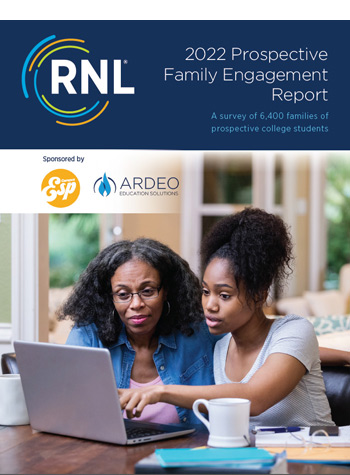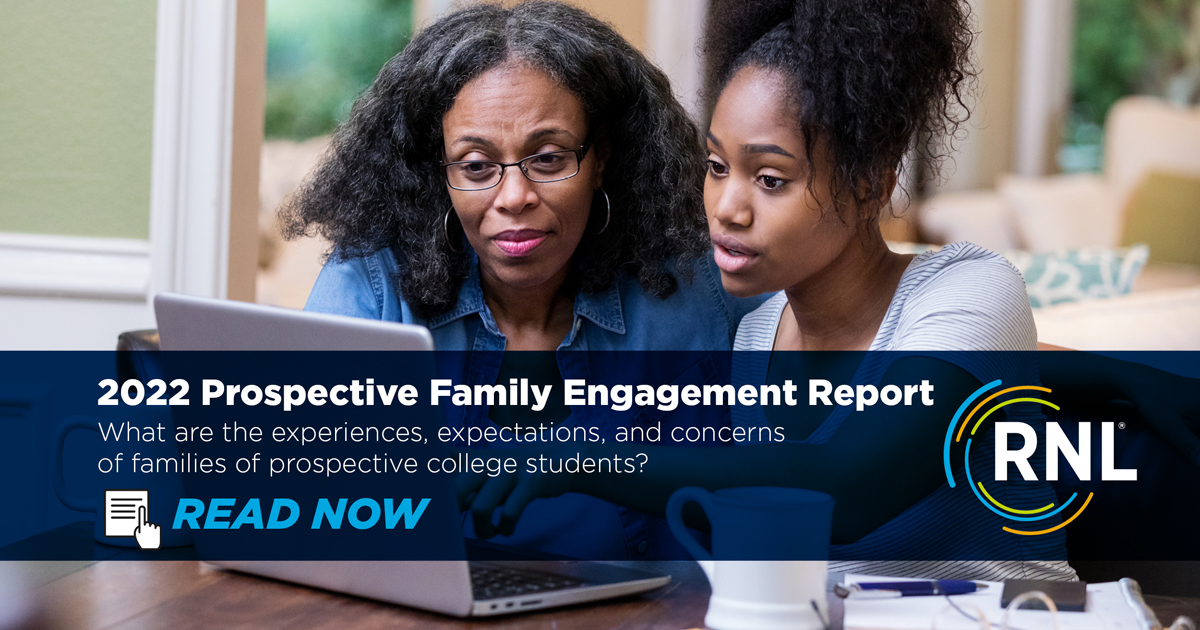enrollment
What Does Equity Have to Do With Campus Visits?
Campus visits are the cornerstone of the prospective college family experience. We just surveyed more than 6,400 families for the 2022 Prospective Family Engagement Report, and the results showed that families experience, value, and access these events (both in-person and virtually) very differently and it very much has to do with equity and access to information.
Nine out of ten prospective families have participated in an in-person campus tour. However, when you look at the demographics of who has participated and who has not, things look slightly different. Equity in access to technology and information could be the reason for these differences.
Differences in participation in campus tours
In looking at in-person campus tour participation, there were major differences by ethnicity, family income, and whether families were first-generation college students. In terms of ethnicity, White families are far more than likely to have participated in an in-person campus tour.
| Ethnicity | Participated in campus tours |
| Asian | 67% |
| Black/African American | 63% |
| Hispanic | 68% |
| White | 89% |
The results by family income level are even more dramatic—income is undoubtedly a factor in the ability to travel and take an in-person campus tour. That is not surprising; families with lower incomes not only have fewer economic resources, but they may be more likely to be in jobs where they cannot take paid time off to travel to a campus with their students.
| Family income | Participated in campus tours |
| Less than $30,000 | 48% |
| $30,000 to $59,999 | 59% |
| $60,000 to $99,999 | 78% |
| $100,000 to $149,999 | 85% |
| $150,000 or more | 92% |
Not surprisingly, we also learned that first-generation families are less likely than continuing-generation families to have participated in an in-person campus tour.
| Generation status | Participated in campus tours |
| First-generation | 73% |
| Continuing generation | 87% |
Differences in virtual campus tours
Virtual campus tours became immediately necessary during the pandemic, but they also offer the potential to be more equitable to families by eliminating the time and expense of traveling to campus.
In our study, five out of ten prospective families have participated in a virtual campus tour. Looking at the results by ethnicity did not show any major differences.
| Ethnicity | Taken virtual tours |
| Asian | 52% |
| Black/African American | 59% |
| Hispanic | 51% |
| White | 57% |
However, in looking at the results by family income, we see similar disparities like we saw with in-person campus visits. Why, you might be wondering? We were too! Virtual tours do not require participants to travel anywhere, so these disparities were surprising to us.
| Family income | Taken virtual tours |
| Less than $30,000 | 36% |
| $30,000 to $59,999 | 46% |
| $60,000 to $99,999 | 48% |
| $100,000 to $149,999 | 54% |
| $150,000 or more | 63% |
We also saw that first-generation families are less likely than continuing-generation families to have participated in a virtual campus tour.
| Generation status | Taken virtual tours |
| First-gen | 46% |
| Continuing generation | 59% |
The value of campus visits to families
Nearly all families value the experience during an on-campus visit (either self-guided or guided). There is no difference in the value families place on the experience based on ethnicity, first-generation status, and family income. As mentioned earlier, the difference in participation can be attributed to the financial ability of the family to travel, pay for transportation, accommodation, be away from their jobs, etc.
Overall, three-quarters of families valued the experience of participating in a virtual tour. But there were significant differences in which families valued virtual visits. In looking at the results by ethnicity, while the majority of White families valued virtual tours, they were much less likely than other ethnicities.
| Ethnicity | Valued virtual visit experience |
| Asian | 85% |
| Black | 88% |
| Hispanic | 84% |
| White | 71% |
Families with higher incomes are also less likely to value the virtual visit, while first-generation students were more likely to value virtual visits than students whose families attended college.
| Family income | Valued virtual visit experience |
| Less than $30,000 | 84% |
| $30,000 to $59,999 | 83% |
| $60,000 to $99,999 | 74% |
| $100,000 to $149,999 | 71% |
| $150,000 or more | 72% |
| Generation status | Valued virtual visit experience |
| First-generation | 80% |
| Continuing generation | 72% |
You might also be asking why are the families who are likely to value the experience of a virtual tour the ones who are less likely to have to participate in virtual tours?Possible reasons could be lack of access to technology such as a home computer or access to high speed internet that’s needed for the tour. For some families, it could also be a lack of English fluency.
What can you do to ensure equitable access and participation of these families in your virtual tours?
- Make taking a virtual tour easy to find on your website.
- Send communication directly to parents and families inviting them to participate in the virtual tours and explaining how to do so.
- Make your virtual tours mobile friendly. Test the experience on a phone using a cellular connection to see how it runs.
- Don’t unnecessarily burden the family by requiring them to complete forms that require them to create accounts or share unnecessary information.
- Offer virtual tours in multiple languages.
- Ensure accessibility of your virtual tours for families with disabilities such as captioning and sign language interpreting, making them accessible to someone who uses screen-reading software (for the blind or people with low vision).
What about making your in-person campus tours more accessible?
- Some issues are out of your control; each family needs to decide what they can afford and what they cannot, but helping families by offering deals and free stays at local hotels would help many families afford that night away from homes.
- Local families might also be willing to host prospective families, especially current students and alumni. That would be a win-win situation. You would create a lasting relationship with a current family by allowing them to step in and help another family and, ultimately, the institution.
- Like we mentioned with virtual tour registration, making registration easy to complete will help promote participation and equity.
- Ask registrants if they need any assistance and accommodations. Plan to fulfill their needs and contact them about how you plan on doing so. Make sure you encourage people with special needs and anyone who needs any accommodation to reach out and ask!
- If any portions of your campus tour are not wheelchair accessible, make sure you plan to provide families with a member in a wheelchair for an alternate plan to experience that portion.
- Finally, ask for feedback! Ask all families who participate in your in-person campus tours to help you get better.
Read our research report for more details
I encourage you to download the 2022 Prospective Family Engagement Report that we conducted with our partners CampusESP and Ardeo Education. It dives into additional topics such as cost of attending college that also get at questions of equity and access. You can also watch our webinar on the research.
Whether a family attends an in-person or a virtual campus tour today should not have anything to do with accessibility and equity. Let’s make sure we include all families by organizing virtual and in-person campus tours that are inclusive, welcoming, and an excellent experience for all!
Engage families throughout the college planning process
Parents and family members can be your biggest enrollment champions. They are the number-one influencers for prospective students. That’s why RNL Student Search to Enrollment makes parent engagement a major part of search campaigns.
Ask for a for a free walkthrough and see how you can engage students and parents at every stage of the enrollment journey.


